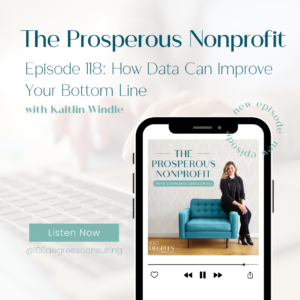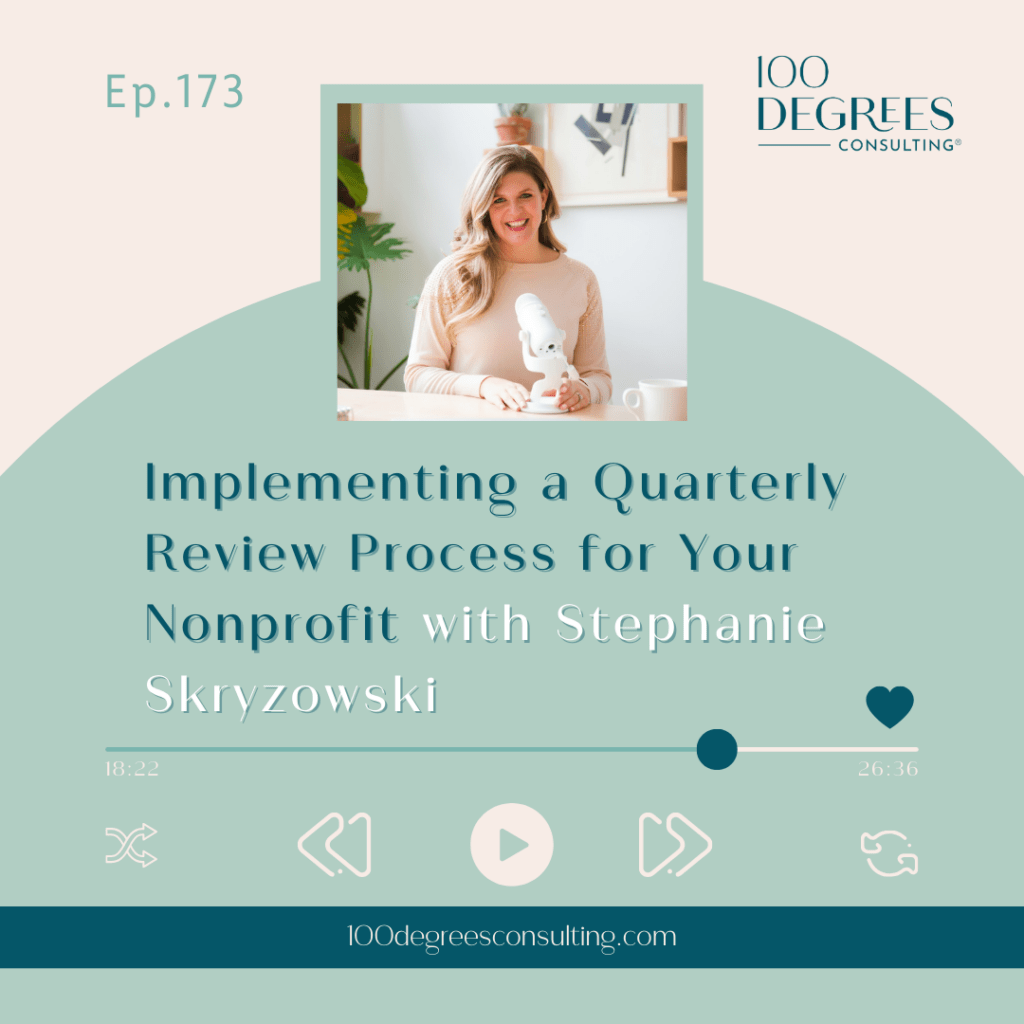
In the dynamic world of nonprofit organizations, the journey between facing a daunting deficit and reaching an unprecedented surplus can often be bridged with access to accurate, timely, and insightful data. This intersection of data and decision-making is a principle that Kaitlin Windle, founder, and CEO of Apte, a data and analytics software company, understands deeply. Yet, equally important is the organization’s most valuable asset – its people. This key aspect often gets overlooked, creating an unspoken gap where people-oriented metrics should be.
From Pirouettes to Pivot Tables: A Unique Journey
Kaitlin’s career transition is as unique as it is enlightening. From a disciplined ballerina to roles in the financial sector at Pantheon and JP Morgan, she brought her precision and commitment into every endeavor. Her unique path took an unexpected turn when she entered the nonprofit sector as the Development Director for Aspen Santa Fe Ballet. It was here that her journey to harness the power of data for nonprofits truly began.
Unleashing the Power of Data
At Aspen Santa Fe Ballet, Kaitlin recognized a significant gap in dynamic data analysis. Despite having a wealth of information in their CRM, Raiser’s Edge, it wasn’t translating into actionable insights. Undeterred, she turned to Excel for a more granular analysis, transforming static data into strategic intelligence. This resulted in the Ballet achieving its most successful fundraising year ever.
Kaitlin then replicated this strategy at another nonprofit. Within six months, the organization bounced back from its worst operating deficit to its best operating surplus. These experiences underscored the transformative potential of data-driven analytics within nonprofit organizations. They sparked the idea of Apte, a company dedicated to revolutionizing data analysis by offering automated, visual insights for leadership teams and boards.
The Overlooked Metric: People in Nonprofit Success
However, during a revealing conversation with Stephanie Skryzowski, a nonprofit financial strategist, Kaitlin recognized an overlooked dimension in nonprofit management – its people. They noted that while financial health is critical, employees’ well-being and satisfaction are equally important. Yet, personnel satisfaction and well-being measurements often need to be more consistently applied in the sector. This neglect raises a critical question: how can an organization flourish if its people are not thriving?
Moreover, Kaitlin emphasized the cost of employee turnover – not just financially but also in terms of time and mission-focused distraction. It became clear that for nonprofits aiming for sustainability, team retention is crucial. High-performing organizations with low employee turnover rates exemplify this, highlighting the need for strong leadership, focus on the team and mission, and simplicity of tasks.
Bridging the Gap: Data Visualization and Employee KPIs
Despite numerous successes, Kaitlin identified a persistent need for data visualization and timely tracking within the nonprofit sector. Automated KPIs and other data tools can free up teams to concentrate on other critical areas. However, Stephanie pointed out that while financial and programmatic KPIs are prevalent, people-oriented metrics often lag. This imbalance in performance measurement needs to be addressed, given the pivotal role employees play in an organization’s success.
Potential KPIs for employees, such as salary growth, number of donor meetings for fundraising personnel, and the provision of anonymous surveys for two-way feedback, can provide an in-depth understanding of the ‘why’ and ‘how’ behind operations. When nonprofit leaders understand these numbers and feel comfortable with them, it can significantly enhance their decision-making processes.
The Transformative Power of Data and People in the Nonprofit Sector
In the final analysis, data, and analytics in the nonprofit sector represent more than just a collection of numbers. They serve as powerful tools
for driving strategic decision-making, enhancing financial health, and empowering nonprofit leaders to concentrate on what truly matters – their mission. Importantly, this also includes understanding the people driving your mission and devising ways to support, motivate, and retain them.
Kaitlin’s software, Apte, addresses this concern. Automating board report creation and data analytics processes allows team members to concentrate on their strengths, such as fundraising and donor engagement. Apte’s guiding principle is to “keep it simple, standardize it, and automate it,” a mantra that removes friction and makes the whole process more approachable and less daunting.
A well-executed budget is a strategic tool for performance evaluation, setting future targets, and fostering transparency. Additionally, adept cash flow management improves nonprofits’ visibility, sustainability, and responsiveness to budget shortfalls. Kaitlin and Stephanie further stress the importance of building surpluses into various accounts to prepare organizations for unexpected circumstances, setting them up for success and growth.
Prioritizing Employee Well-being: A Strategic Imperative
Stephanie and Kaitlin advocate for prioritizing employee well-being in the sector. They argue that without a strong foundation of satisfied and motivated employees, an organization’s programmatic impact may be short-lived. This calls for a shift in mindset where taking care of staff is seen not as an afterthought but as a strategic imperative.
The Way Forward: A Simplified Approach to Data and People Analytics
For nonprofits ready to embrace data and analytics, understanding where they currently stand with their data and their next steps is crucial. This could involve working with a service provider like Apte or developing their data strategies in-house. The key is to recognize the role of data in driving organizational success, including the acknowledgment that data is not just about numbers on a balance sheet.
In the realm of nonprofits, embracing this people-centered approach could be the missing link to sustainable success. If you find your organization overwhelmed by the complexity of data, remember: simplicity, standardization, and automation are the keys to turning this challenge into an opportunity.
In conclusion, the power of data-driven decisions and people metrics in nonprofits has transformative potential. When leveraged correctly, these tools can drive strategic decision-making, enhance financial health, and, most importantly, ensure the well-being of the individuals driving your mission.
Read the podcast transcripts here.
Links mentioned in this episode:
- Connect with Stephanie on Instagram
- Connect with 100 Degrees Consulting on Instagram
- Understand (and maximize) your organization’s numbers with this free download
- Learn more about Apte and visit their website
Want more of the podcast?
- New episodes are released weekly! Find them all plus show notes and exclusive bonus content at 100degreesconsulting.com/podcast
- Leave us a review! Click here, scroll to the bottom, tap to rate with five stars, and select “Write a Review.” Let me know what you loved most about this episode!
- Subscribe to the show so you don’t miss a thing




















